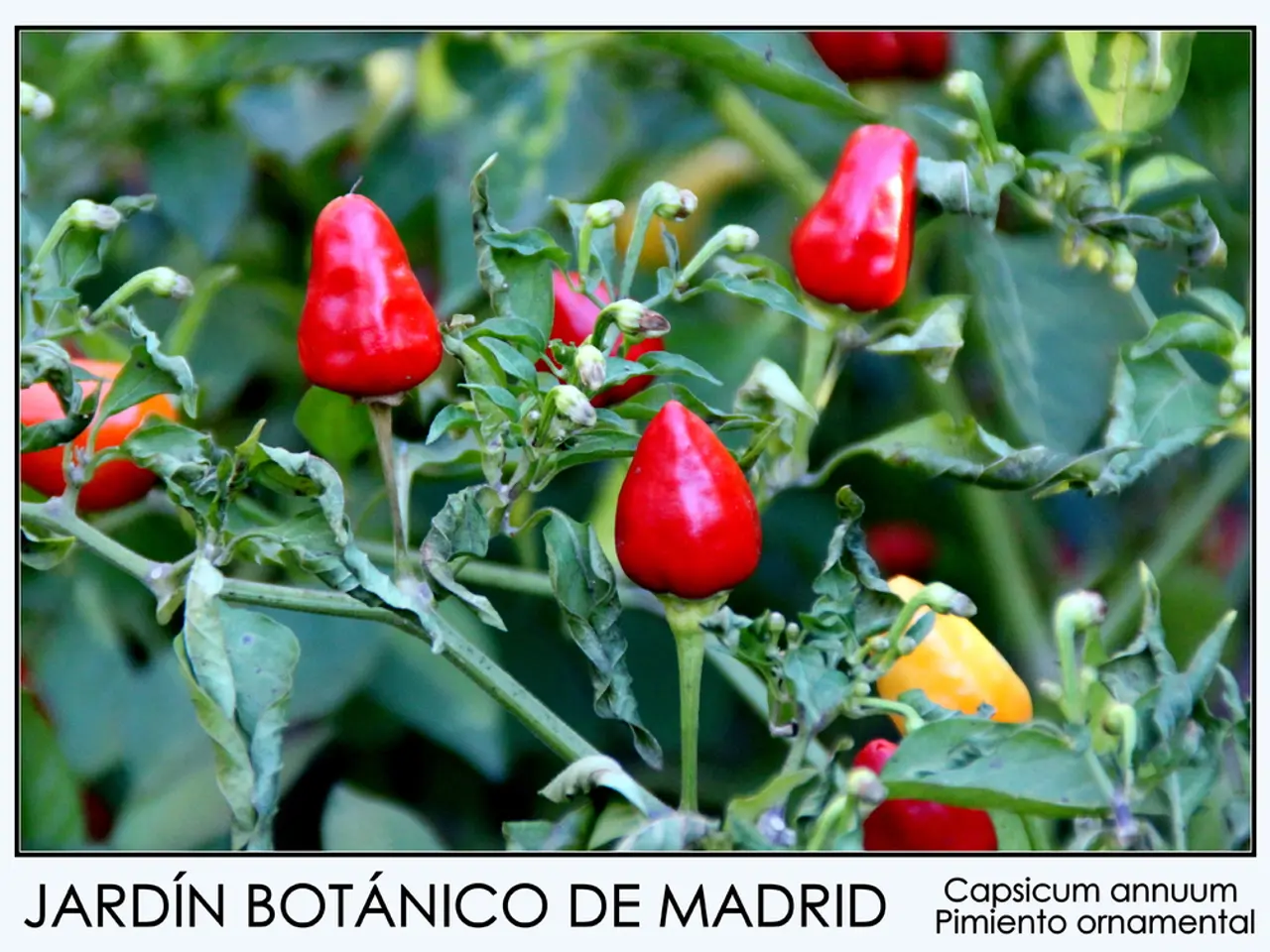Plant Ailments Caused by Bacteria
In the world of horticulture, bacterial diseases pose a significant threat to various crops, including vegetables, fruits, and ornamental plants. These diseases, such as bacterial ring rot, bacterial wilt, and bacterial leaf scorch, often cause wilting, leaf spots, cankers, rot, and overall plant decline [1][2][5].
To combat these issues, an integrated approach is essential. This strategy combines prevention, resistant varieties, early detection and monitoring, cultural practices, chemical controls, and biological controls [1][2][3][5].
Prevention is key, and this involves using disease-free seeds and planting material, crop rotation to avoid the buildup of bacteria, and practicing good sanitation to prevent spread. This includes disinfecting tools and equipment [1]. Utilizing crop varieties bred for resistance to specific bacterial pathogens is another important preventative measure [1].
Early detection and monitoring are crucial for efficient management of outbreaks. Modern diagnostics, including microscopic identification, molecular tools, and satellite or AI-based monitoring systems, play a significant role in this [1].
Cultural practices also play a vital role in disease management. Improving air circulation by pruning and trellising, using drip irrigation to reduce leaf wetness, removing and destroying infected plant parts, and avoiding overhead irrigation, especially in conditions favorable for bacterial growth, are all important practices [1].
Chemical controls, such as applying bactericides like copper-based compounds as protectants, and alternating with other approved chemicals to limit pathogen resistance development, are also part of the strategy [1]. Biological controls, using beneficial microbes and biocontrol agents that antagonize plant bacterial pathogens, can also help reduce disease incidence [1].
Preventing surface wounds that permit the entrance of bacteria into the inner tissues is a crucial cultural practice for managing bacterial diseases [1]. Emphasis for controlling bacterial diseases in plants is on preventing the spread of the bacteria rather than curing the plant [1].
Bacteria that cause plant diseases are spread through various means, including rain, wind, birds, insects, and propagation with infected plant material [1]. It's important to note that phytoplasmas and spiroplasmas are bacteria that lack rigid cell walls [1].
Bacteria are microscopic, single-celled organisms that reproduce asexually by binary fission [1]. Antibiotics such as streptomycin and oxytetracycline can help kill or suppress plant pathogenic bacteria prior to infection and reduce the spread of disease [1]. Crop rotation is used to reduce over-wintering of bacterial pathogens [1].
Bacteria are classified into two main groups based on cell wall structure: Gram negative and Gram positive [1]. Prolonged exposure to dry air, heat, and sunlight can sometimes kill bacteria in plant material [1].
In summary, an integrated approach that combines preventive hygiene, resistant plants, regular monitoring, appropriate chemical and biological treatments, and optimized cultural practices is the most effective way to reduce disease development and spread in plants.
- In the realm of health and wellness, understanding the science of bacterial diseases in soil and their impact on crops is crucial, as chronic exposure can lead to medical-conditions in humans when ingesting infected produce.
- Reducing the risk of medical-conditions caused by soil-borne bacterial diseases requires integrating various strategies, such as utilizing disease-free seeds, employing crop rotation, practicing good sanitation, and combining chemical and biological controls, as these have shown effectiveness in the horticulture world.




